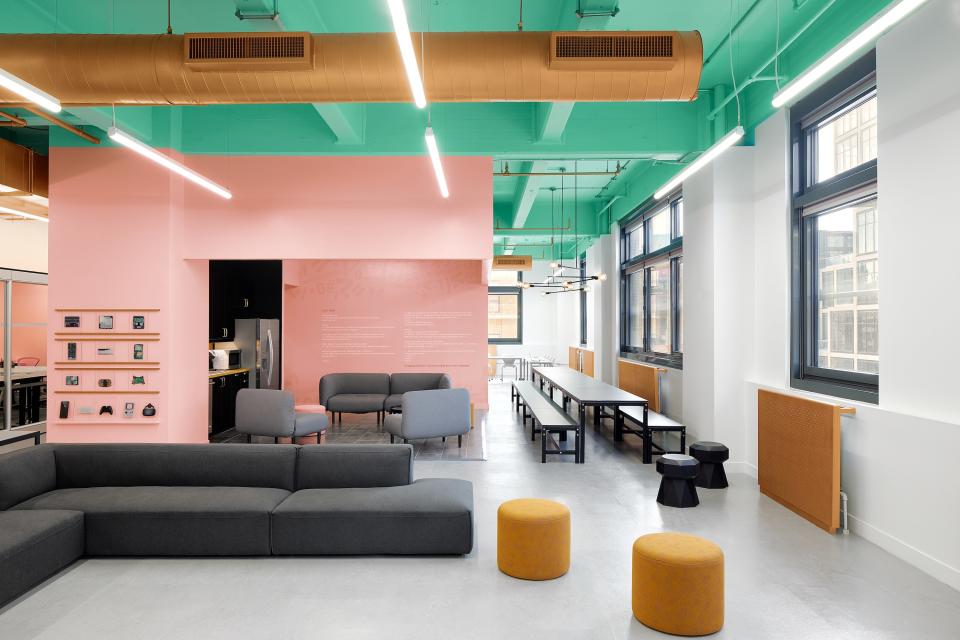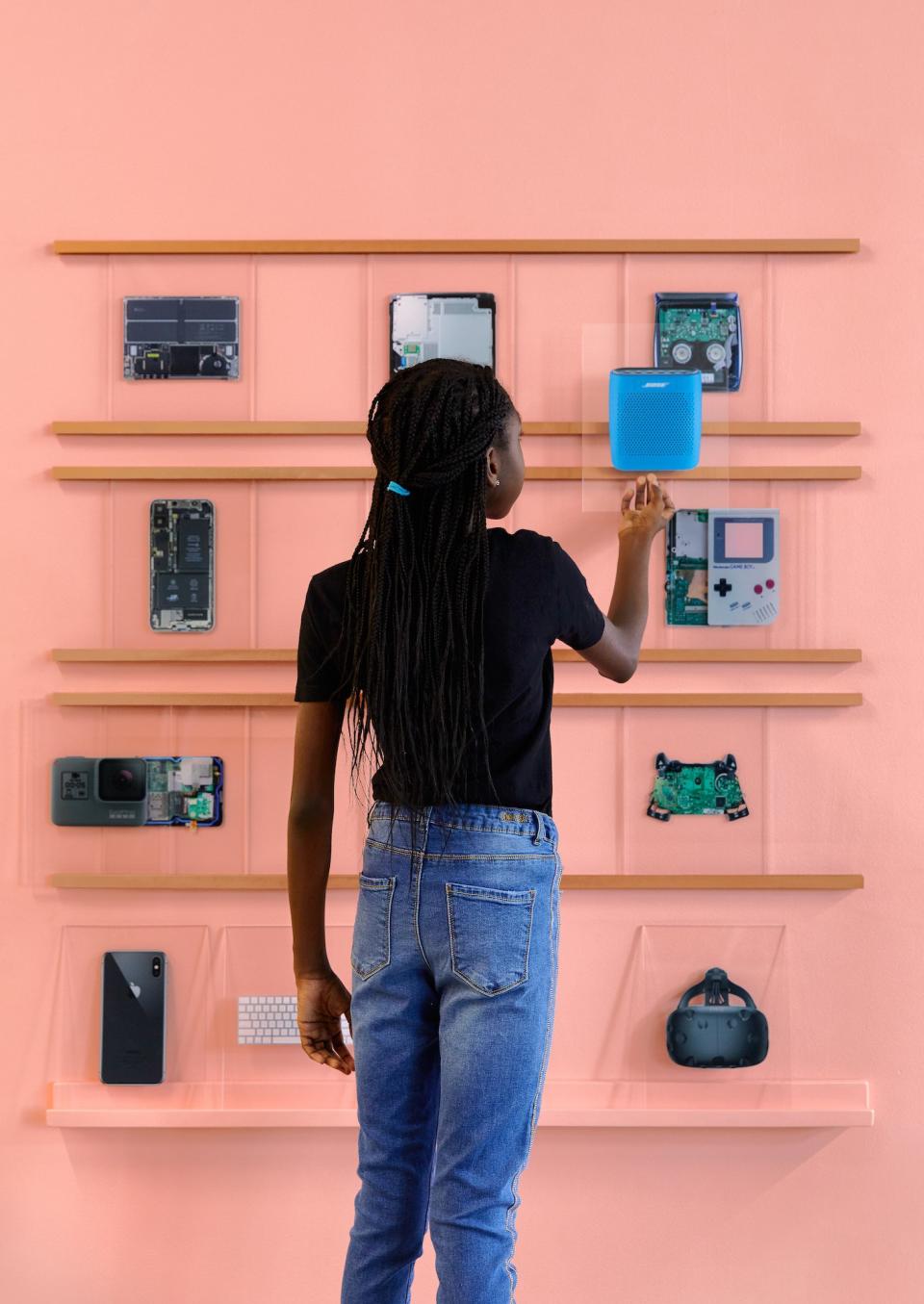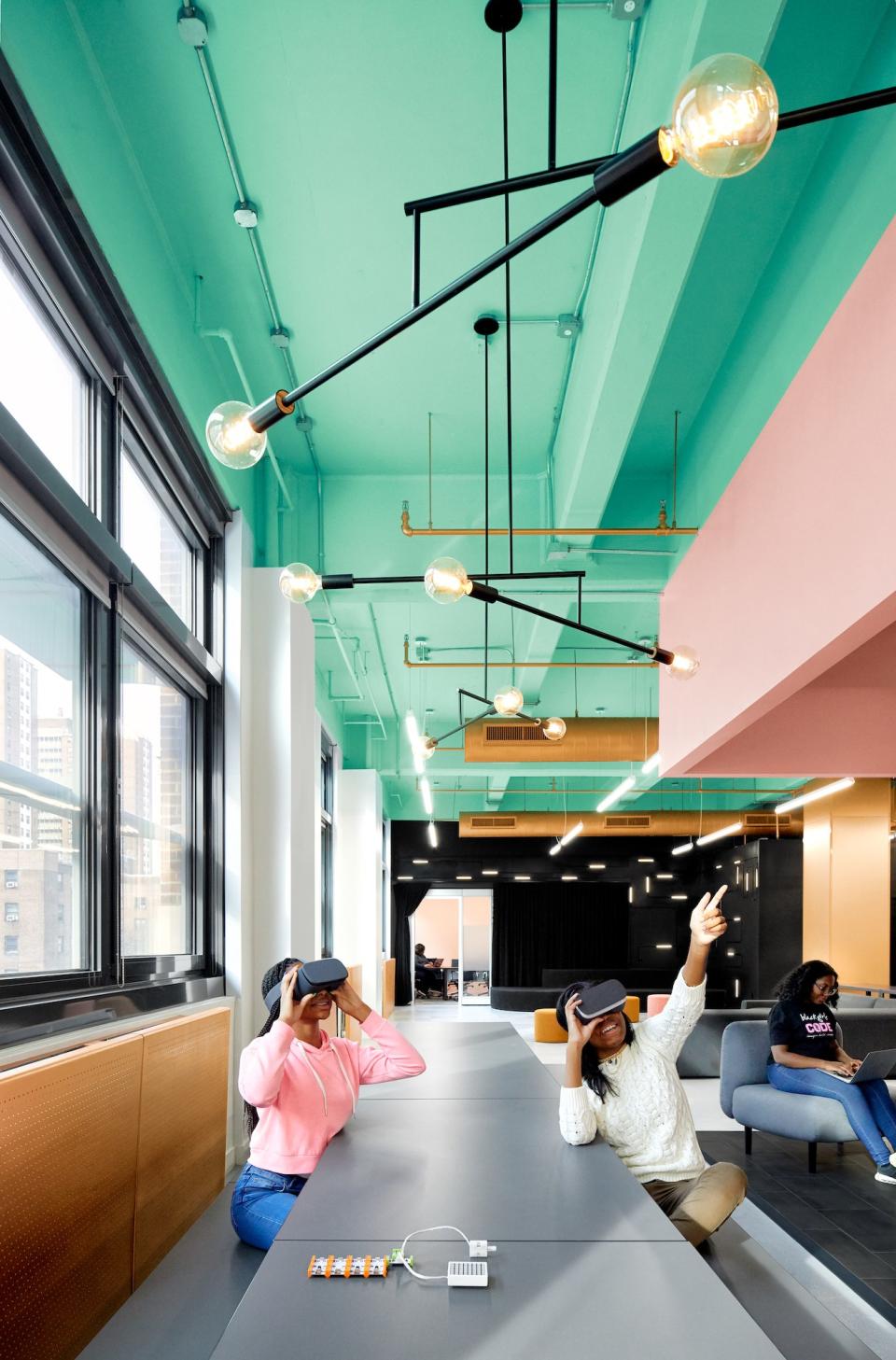This Newly Designed Space Encourages Women of Color to Learn Tech Fundamentals
Last month, when Melinda Gates announced a $50 million initiative to support gender-inclusive tech hubs, she highlighted a stubborn reality about the tech industry: By large margins, women are consistently underrepresented in the workforce. For women of color, those margins are even more extreme. According to a study by McKinsey, women of color represent only 4% of technical roles in tech companies (despite accounting for 16% of the general population). And when it comes to seats in the boardroom, that proportion dwindles even further.
Addressing this employment gap is not just a matter of making more hires. In what is a systemic problem with education—even education in its earliest stages—girls have less access and exposure to the types of math-, engineering-, and science-based curricula and training that later position their male counterparts as contenders for tech jobs.

So for an emerging group of tech leaders—and architects—who want to see greater gender equity reflected across the industry, creating environments where younger girls have access to tech fundamentals has become an urgent priority. Take Black Girls Code, for example. Its founder, Kimberly Bryant, recalls feeling “culturally isolated” throughout her training in engineering, so she launched Black Girls Code to provide young girls a point of access to tech fundamentals, including coding.

To design its new space in New York, Black Girls Code turned to Danish Kurani, a young Harvard-trained architect who had recently designed Google’s Code Next Lab, a space for high school–age students to take math, science, and technology lessons taught by Google engineers. Because the aim of Black Girls Code is to make technology and science less intimidating, its interior design was imperative. Kurani notes, “This is the first time many of these girls are doing robotics or coding, so the question was ‘how do you design a space where tech seems less daunting and more familiar?’” His response is a brightly colored environment that encourages the girls to interact with the space—in a way not unlike a tech workplace.

“The design is meant to make them feel like they’re behind the scenes, insiders,” says Kurani. “The idea was to get them to think, I’m not just a consumer of technology. I can see what goes into it.” With that in mind, Kurani designed the interior to be comfortable and inviting—and also instructive. As he puts it, “The interior is an attempt to break down technology, to make it familiar.” Wall graphics refer to seminal technologies, interactive displays break open—literally so—for common devices like smartphones and game stations, and a wall feature asks girls to match the insides of devices with their outside casing.

The architectural elements too have been designed to provide teaching opportunities. As Kurani explains, “For lighting, we exposed the filaments so the girls can see what goes into lights, and for the conduits that run along the ceiling, we converted them to look like the circuitry of a motherboard.”
The space, however, is not singularly focused on instruction and teaching. Part of its objective is to make girls feel comfortable and confident about being amid technology. As Kurani says, “Expertise in technology should have nothing to do with age, gender, or skin color.” As a measure of the space’s success, he imagines the way one of its users might put it: “Yeah, I’m a nine-year-old girl—and I know how to code.”
Originally Appeared on Architectural Digest


